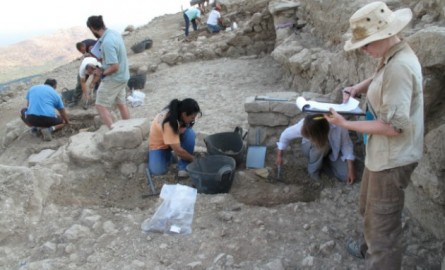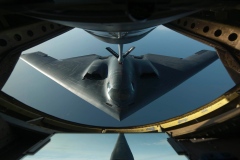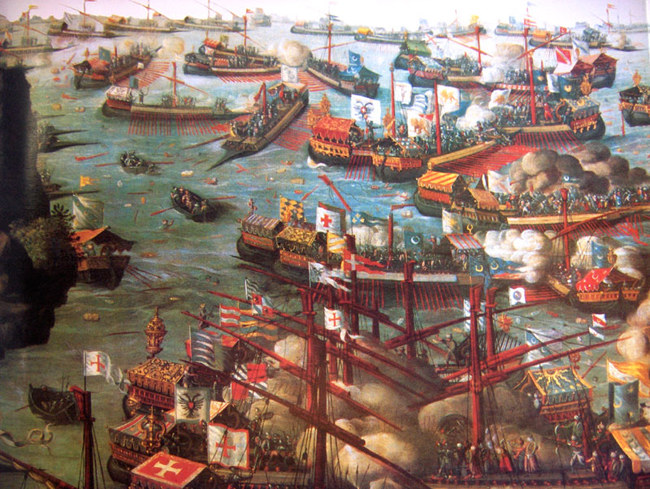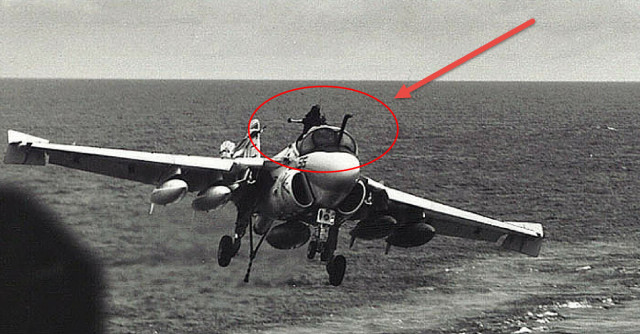The Greek word for military equipment roughly translates to
hopla,
and thus a hoplite simply pertained to the ancient version of the ‘man
at arms’ or ‘armored man’. Of course, unlike their late medieval
counterparts, the hoplites were first and foremost citizen-soldiers –
and thus were expected to take part in battles to safeguard their own
interests and farms, as opposed to viewing military as a well-paying
career. And while the ‘classic’ well-armored and trained Greek soldier
was ultimately eclipsed by the tactical
Macedonian phalanx
in late 4th century BC, Greek hoplites (and their predecessors) had
dominated the European battlefields for almost three centuries before
that. So without further ado, let us check out ten incredible facts you
might not have known about the Greek hoplites.
1) ‘Tribes’ without blood relations –

The
so-called ‘tribe’ in Greek city-states were rather a politico-military
evolution, contrary to what ‘tribal’ warfare suggests. Simply put, the
state probably organized its citizens and thus fighting men into tribes
that had a purpose both census-wise and politically – as opposed to the
conventional tribe that is primarily tied by blood relations. This
arrangement possibly took roots by the 7th century as a more immediate
solution for organized warfare and defense. In short, the tribe system
(with ties of citizenry, not blood) was a natural evolution of the Greek
society and military that required disciplined formations and trained
men for protracted warfare, a factor that was rarely encountered (beyond
literature) in the previous ‘heroic ages’. Such measures over time gave
rise to the Greek hoplites, a class of warriors that was not really
separate from the citizens themselves. In essence, a hoplite was a
citizen-soldier who took up arms to defend or expand the realm of his
city-state. And it should be noted that as a general rule, most adult
males of the Greek city-states were expected to perform military
service.
2) The oath of the ‘youths’ –

The
road to ‘manhood’ for males of most Greek city-states started with
military training after the passing of his 18th year (Spartans had a
different military system, as discussed
here).
These adults gathered at one place after their birth records and census
was cross-checked – a scenario which happened at the start of every
year, which in most ancient Greek calendars was just after the passing
of summer. And on clearing these official requirements, they were asked
to dress in the full war panoply and then utter an oath. In case of
Athens, the oath was taken in the Temple of Aglauros, and the
(preserved) text is as follows –
I will not disgrace my sacred
arms nor desert my comrade, wherever I am stationed. I will fight for
things sacred and things profane. And both alone and with all to help
me. I will transmit my fatherland not diminished but greater and better
than before. I will obey the ruling magistrates who rule reasonably, and
I will observe the established laws and whatever laws in the future may
be reasonably established. If any person seek to overturn the laws,
both alone and with all to help me, I will oppose him. I will honor the
religion of my fathers. I call to witness the Gods Agraulus, Hestia,
Enyo, Enyalius, Ares, Athena the Warrior, Zeus, Thallo, Auxo, Hegemone,
Heracles, and the boundaries of my native land, the wheat, the barley,
the vines, and the trees of the olive and the fig.
It is better known as the Ephebic Oath, while the young men themselves were called the
epheboi
(youths) after the ceremony. This marked the starting phase of the next
two years of introductory military training known as ‘ephebate’, and it
mostly entailed a slew of athletic contests. As for the oath in
question, it was found in a preserved state on an engraved 4th century
BC stele, inside the ancient Athenian
deme (township) of Archarnae.
3) Hoplitodromos – the hoplite race ‘instigated’ by the Persians –

As
we discussed in the previous entry, the ephebate training started with
the practice of different athletic endeavors. One of these state
organized activities entailed the so-called
hoplitodromos – an
ancient foot race probably making its debut at Olympia in 520 BC.
Interestingly, the race event was introduced after the first Greek
armies encountered the
Persians
who were known for their fast archery skills. So the hypothesis can be
credibly drawn on how the race was developed and initiated as a
fast-moving maneuver for training the Greek hoplites to ‘catch up’ to
the Persian archers . To that end, the participants were required to run
over a distance of 350-400 m (around 1,300 ft) that covered a single
lap of the stadium (or two stades). But at times, the sprinting track
was expanded, like at Nemea the distance was increased to 700-800 m,
while at Plataea the distance was kept at a whopping 15 stades. This
running passage possibly emulated the battlefield tactic of rushing
through the enemy skirmishers to reach their actual lines.
Now
while the distance in itself was substantial, it also should also be
taken into account that the participants had to run in their partial
Greek hoplite panoply, including the weighty helmets and greaves.
Moreover, they also had to carry shields – which were probably ‘testing’
specimens specifically crafted for the
hoplitodromos events. In other words, the shields used in the race might have been lighter counterparts to the actual
aspis, the heavier wooden shield (reinforced with a thin sheet of bronze) originally carried in battles.
4) ‘Buddies’ and ‘lovers’ –

In
buddy cop movies, the trope usually involves the pairing of a young,
‘green’ but dynamic candidate with the older, wiser and grizzled police
veteran. And it seems even the ancient Greeks were quite fond of a
similar social set-up where the
epheboi (youth) was paired with an older man who still trained in the
gymnasia.
Now in a conventional scenario, the older male was expected to act as
the younger trainee’s guardian, and thus was responsible for the youth’s
conduct, courage and even military training during the ephebate period.
However,
Greek sources frequently denote such pairs as ‘lovers’ – which is not
meant to be taken literally in a sexual sense. In fact, Xenophon
makes it clear
on how purely physical relationships between males could be officially
banned from the state. But that didn’t necessarily stop a few pairs from
carrying on their elicit relationships. Some contemporary comedies
tended to exaggerate such scenarios of homosexual activities inside the
gymnasia. Xenophon also attests to the ‘carnal’ love between young men
being prevalent in places like Thebes and Elis.
5) The ‘best’ belonged to the front and the rear of a hoplite phalanx –

Gone
were the days of the euphemistic ‘heroic age’, when men fought in
chaotic huddles and chosen warriors picked at one another. The Greek
hoplites were part of an ‘institution’ who fought in a phalanx formation
where every member looked out for each other – and thus the
aspis
shield was considered as the most crucial part of a hoplite equipment.
For example, when the exiled Spartan king Demaratos was asked the
question – why men are dishonored only when they lose their shields but
not when they lose their cuirasses? The Spartan king made his case –
‘because the latter [other armors] they put on for their own protection,
but the shield for the common good of the whole line.’
Interestingly,
Xenophon also talks about the more tactical side to a hoplite phalanx,
which was more than just a closely-packed mass of armored spearmen. He
draws comparison to the construction of a well-built house (in
Memorabilia)
– “just as stones, bricks, timber and tiles flung together anyhow are
useless, whereas when the materials that neither rot nor decay, that is,
the stones and tiles, are placed at the bottom and the top, and the
bricks and timber are put together in the middle, as in building, the
result is something of great value, a house, in fact.” Similarly, in the
case of a phalanx of Greek hoplites, the historian talks about how the
best men should be placed both in front and rear of the ranks. With this
‘modified’ formation, the men in the middle (with presumably lesser
morale or physical prowess) would be inspired by the front-placed men
while also being driven forth by the rear-placed men.
6) Classical hoplites probably favored mobility over armor –

When
we talk about Classical Greek hoplites, we mean the armored
citizen-soldiers who dominated the Greek military world from early 5th
century BC to late 4th century BC (before the advent of
Alexander the Great).
Now intriguingly enough, while popular depictions allude to superbly
heavy and imposing ‘bronzed’ round-shields being carried by the Greek
hoplites, the
aspis was not necessarily meant to be ‘excessive’
in its structure. In fact, the ‘classic’ hoplite shield weighed around
13.5 lbs, which was just a bit heavier than the reformed Roman
scutum
that weighed 12 lbs. Even its ‘bronzed’ part pertained to just a thin
bronze ring (less than half-millimeter in thickness) that draped the
wooden shield on the outer face. As for the wood itself, lightweight
varieties like poplar and willow were used in composite layers (much
like modern day plywood).
In essence, the
aspis was
rather tailored to mobility as opposed to a heavy protection equipment.
Simply put, the hoplite shield acted as a practical deterrent to spear
and sword thrusts that must have been common in melee combat scenarios.
But it was not exactly the best solution for projectiles that had
greater kinetic energy, like javelins and arrows. Pottery scenes conform
to the latter mentioned shortcoming of
aspis by depicting various pierced shields.
7) The famed helmet crests were just for show and pomp –

Horsehair
crests upon helmets have long been the favorite of history reenactment
groups and (even it seems) in the actual ancient armies. Ubiquitously
dyed in bright and gaudy colors, they unsurprisingly didn’t serve any
practical purpose; though such ‘decorations’ might have had some
psychological value – with the flourishing crest endowing a more
imposing air to the wearer while also making him appear taller. And by
the latter Classical period, the type of crest also related to the rank
of the hoplite. For example, Lamachus, the Athenian general who took
part in the Peloponnesian War, embellished his helmet with three crests
and two plumes (as mentioned by Nicholas Sekunda in the
Greek Hoplite).
Interestingly,
the famed Spartan crimson cloaks were also adopted primarily because of
their visual predominance. Plutarch mentioned how the red-hued clothing
might have psychologically afflicted the enemy while also hiding the
Spartan’s blood wounds. This explanation might have some justification,
since most Greek armies contemporary to even Xenophon’s time (the first
half of 4th century BC) adopted some variants of the crimson clothing,
probably inspired by their Spartan counterparts. And lastly, there
was/is the association of vibrant colors to regal means and swagger.
8) Physical infirmity was possibly (mostly) overlooked in case of Spartan hoplites –

While the movie
300
depicted how a physically deformed man named Ephialtes betrayed the
Spartans since he was not allowed to serve in the hoplite phalanx,
Herodotus’ account doesn’t take such a ‘fantastical’ route. In fact by
historical accounts, even men with physical infirmities were liable to
serve in the Spartan army, with the greatest example pertaining to
Agesilaos (or Agesilaus II), the limping warrior-king of Sparta who
oversaw numerous forays into Asia Minor while also playing a successful
part in the Corinthian War. And while infant inspections possibly
happened as portrayed in the aforementioned movie (at least in few
instances), the handicapped adult Spartan probably expected himself to
be enrolled in their fighting army. Plutarch gives us an account of a
Spartan named Androkleidas who was crippled and thus turned down when he
wanted to join the hoplite ranks. His retort was – ‘I do not have to be
able to run away, but rather to stand and fight the foe.’
9) Wine before battle –

The ancient Greeks mostly took their meals during two particular times in a day, with
ariston mostly equating to what is known as ‘brunch’ nowadays and
deipnon
equating to dinner – thus allowing most battles to take place in the
afternoon period. During both these times, wine was consumed in moderate
amounts. However, as Nicholas Sekunda mentions, the Greek hoplites had
the tendency to consume extra alcohol or wine just before a battle, so
as to calm their nerves. Even a few commanders partook in such
‘reveling’ before serious battlefield encounters. Xenophon mentions how
Spartan king Kleombrotos I and his officers drank too much in their
council before the disastrous Battle of Leuktra. On the other hand, it
should also be noted that
ariston was the crucial time when
many commanders also ‘soberly’ planned out their moves that involved the
formation and maneuvers of the collective host of his army.
10) Morale more important than strength in numbers –

Another
popular depiction of ancient warfare frequently involves the pushing
and shoving of the Greek hoplites when it clashed with the enemy. Now
while such a scenario was probably the credible outcome of two tight
phalanxes clashing with each other, in reality many battles didn’t even
come to the scope of ‘physical contact’. In other words, a hoplite
charge was often not successful because the citizen-soldiers tended to
break their ranks (and disperse) even before starting a bold maneuver.
As a result, the army that held its ground often emerged victorious –
thus exemplifying how morale was far more important than sheer strength
in numbers (which alludes to why the Spartans were considered lethal in a
battlefield).
Intriguingly, this once again brings us to
Xenophon’s ‘house analogy’, where he says the best men were to be placed
in the front and rear of a phalanx. And from a practical perspective,
while the front-placed men didn’t have any space to run away from the
battlefield, it was the rear-placed men who tended to break away from
the subsequent charge, thus ultimately resulting in their cumbersome
dispersal. One of the solutions for this morale-based predicament was to
make the phalanx deeper with more men, so as to psychologically
reinforce (rather than physically support) the ones in the rear. Another
deep-rooted tradition entailed the singing of encouraging hymns (
paeans)
dedicated to gods of war just before the hoplites were to begin their
progress and charge. So, as with many Greek customs, there might have
been a practical side underneath this seemingly religious veneer.
Thucydides himself mentioned how the songs and their tunes kept the
marching line in order, which encompassed a major battlefield tactic –
since Greek warfare (and victory) generally involved closing in with the
enemy with a solid, unbroken line.
Sources: MilitaryFactory / Livius / BBC / Koryvantes / LARP






























